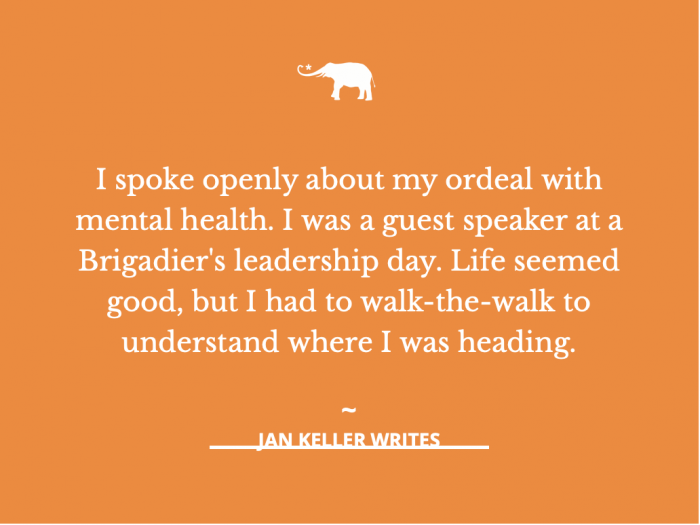Don’t over complicate good leadership. Keep it simple. You can earn trust and increase workplace wellbeing with a positive action. Let me explain with a few easy steps, but first a little context.
During the early years of my military career, I accepted the boss was the boss, and I was the slave. ‘Do what I say, and not what I do‘, was the rule of thumb in the mid-1990s. There is a time and a place for robust leadership, but there’s always time for positive intervention.
As I young adult, I had never heard the words ‘headspace’ or ‘mindfulness’. Those were words used to fill up the pages in the Oxford Dictionary. Unless you had a drinking or gambling problem, talking about mental health in the Army was a taboo subject.
A changing workplace – positive reinforcement, and a change for the better
In 2013, a psychiatrist diagnosed me with moderate-to-severe depression and general anxiety disorder. Time, self-motivation, and understanding expedited my recovery, although I will disclose the infrequent downward dips.
Exiting the fog of depression triggered an urge to create and learn new things. I started writing for a sports blog. In 2014, I enrolled at the University of Northampton, completing a Master’s Degree in 2016. Life seemed better, more productive, and I looked outwards to support others.
Am I ashamed of my battle with mental health? Not at all (and if you are a sufferer, nor should you be). My final assignment landed me in a post at a 4-Star Headquarters. I spoke openly about my ordeal with mental health. I was a guest speaker at a Brigadier’s leadership day. Life seemed good, but I had to walk-the-walk to understand where I was heading.
I was a Sergeant Major, a rank befitting a soldier with confidence and swagger. None of those traits existed in with me in 2013, and that’s the point of my message. Why didn’t my chain-of-command intervene before I hit rock bottom? I will try to answer that question.
Failing Mental Health Strategies
Look around your workplace. You may notice lots of positive messages, advertisements for helplines, or mental health first aiders. That’s the first problem right there. Who is addressing the stigmas? Who is showing the way by openly talking about the smorgasbord of mental health issues?
My experience tells me literature as a standalone media format is futile. We must reinforce the mental health goodwill message with trust. How do we build trust? Through talking to each other in workshops, informal meetings, one-to-one meetings, etc.
In 2013 (and prior) that’s where my line managers and I failed. Yes, I am shouldering some of the responsibility. My bosses didn’t listen because I didn’t have the space to speak openly. That brings me on to a strategy I have embraced for over five years – building trust and providing space for your team.
40 minutes works wonders – Working Example
Yorkshire, 2018. I lead several teams covering a myriad of disciplines. Team A, comprising three operatives, were loan workers. Experience taught me alone time is crucial, but too much can become toxic.
I addressed the team, informing them of my intentions to hold a weekly team meeting at 08:00 hours on a day of their choosing. The timing depended on their workload. I established a few simple rules;
- Privacy
- Confidentiality
- Freedom to speak
- Lots of tea or coffee
My team realised I was there to support them. As time went on, I noticed a change in attitudes. Rather than finishing for the day and packing up, individuals would call each other to lend a hand. An old-fashioned, or narrow-minded boss may perceive the 40 minutes as time lost, crazy. Presenteeism is the Devil’s time.
I continue to hold a conversation with my teams and immediate reports, not too long to affect their daily routine, but long enough to build trust and give them time to wind down before solving the next problem.
Have a look around your workplace, and determine if your team needs a regular 40 minute timeout. If you would like to know more about my mental health journey, or how you can support a colleague or loved one, drop me a message on social media.
Good luck and thank you for reading.







Read 0 comments and reply